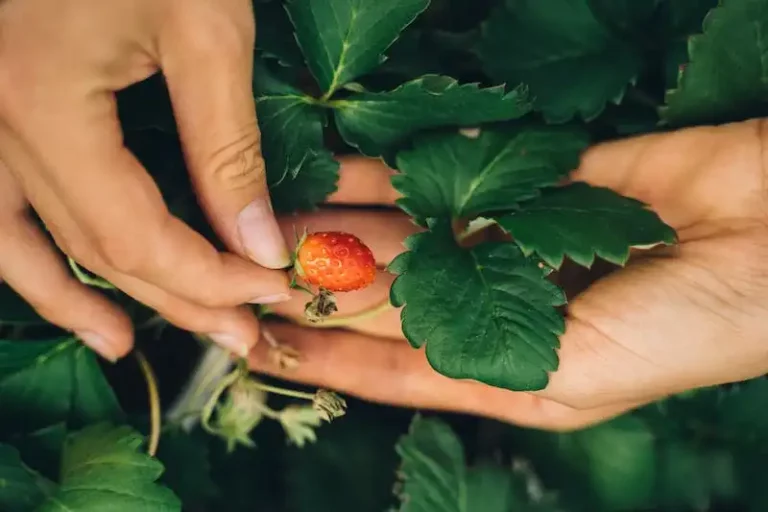Hyssop (Hyssopus) is a lovely green plant that has a rich history and many uses, including culinary and medicinal. It is a woody perennial plant in the mint family. The Latin name for hyssop is Hyssopus, which comes from the Greek word “hyssopos.” It is a quick-growing herb that is native to the Mediterranean region but can now be found throughout North America.
Hyssop has a square stem and small leaves that are often used in cooking. The plant has lovely flowers that come in a variety of colors, including blue, pink, and roseapink. Hyssop is often used to make teas, stews, and soups because of its strong aroma and flavor. The leaves and stalks can be dried and stored for future use.
Hyssop is also a great source of nectar for bees and other pollinators. It can be planted in the garden to attract these beneficial insects. Hyssop is also a great addition to the landscape, as its dense growth habit can be used as a hedge or border plant.
When caring for hyssop, it is important to plant it in well-drained soil and in a sunny location. It is drought-tolerant and does not require a lot of watering. Hyssop should be fertilized during the growing season and pruned to maintain its shape. It can sometimes be susceptible to diseases, so it is important to keep the plant well-ventilated and free from excess moisture.
If you’ve never grown hyssop before, follow this quick guide for advice on care and propagation. Hyssop is a versatile plant with many uses and benefits, both in the garden and in the kitchen. So why not give it a try in your garden? You won’t be disappointed!
Hyssopus officinalis
Hyssopus officinalis, commonly known as hyssop, is a woody perennial plant in the family Lamiaceae. It is native to Europe and has a long history of use in herbal medicine and culinary applications. The plant is known for its lovely foliage, including anise-scented leaves and beautiful flowers that attract hummingbirds, bees, and other pollinators.
Hyssop is best grown in well-drained soils and full sun. It is tolerant of a wide range of soil types but thrives in slightly alkaline soils. The plant is drought tolerant once established but will benefit from regular watering, especially during dry spells.
Hyssop can be grown from seed or propagated through division. To ensure successful growth, it is important to follow the proper planting and care techniques for this species. Hyssop can be grown in containers, as a border plant, or as part of an herb garden.
Hyssop has a variety of uses, both culinary and medicinal. The leaves and flowers can be used to make teas, infusions, and tinctures. The plant’s essential oils are important components in traditional herbal remedies and are frequently used in cooking to add a unique flavor to soups, stews, and other dishes.
In addition to its culinary and medicinal uses, hyssop has a rich history and is often associated with spiritual cleansing and purification. The plant’s fragrance has been used in rituals and ceremonies dating back to ancient times.
Hyssop is a low-maintenance plant that requires minimal care. It is generally disease and pest resistant, although it may attract aphids and spider mites on occasion. Regular pruning can help maintain its shape and promote healthy growth.
| Common Names | Hyssop, Hyssopus |
|---|---|
| Genus | Hyssopus |
| Family | Lamiaceae |
| Plant Type | Perennial |
| Hardiness Zone | 4-11 |
| Physical Description | Woody plant with anise-scented foliage and beautiful flowers |
| Growth Rate | Moderate |
| Water Needs | Medium |
| Sun Exposure | Full sun |
| Soil Type | Well-drained soils |
| Soil pH | Slightly alkaline |
Whether you’ve been drawn to hyssop for its cultural history, its lovely foliage, or its culinary uses, incorporating this plant into your garden can be a rewarding experience. Follow the advice and guidelines provided in this article, and you will be well on your way to growing a healthy and vibrant hyssop plant.
hyssop
Hyssop is a versatile plant that has a long history of use by gardeners and herbalists alike. This herb is known for its showy flowers and aromatic foliage, making it a great addition to any garden or container. Hyssop belongs to the same genus as the mint plant, and it is sometimes referred to as officinalis.
Hyssop has a number of important uses, including as a pollinator plant for bees and hummingbirds. The flowers of the hyssop plant have a high nectar content, which makes them attractive to these pollinators. Additionally, the aromatic foliage of hyssop is often used in cooking and herbal remedies, as it adds a unique flavor and can help soothe a sore throat.
When it comes to growing hyssop, it is important to choose the right location for the plant. Hyssop grows best in full sun, although it can tolerate some shade. The soil should be well-drained and moist, but not overly wet. Watering hyssop once a week is usually sufficient, but this may vary depending on the climate and whether the plant is grown in a container or in the ground. It is also important to follow proper watering methods to prevent the plant from being overwatered or underwatered.
Hyssop can be grown from seed or from cuttings. If starting from seed, it is best to plant them indoors about 6-8 weeks before the last frost date, and then transplant the seedlings outside after the danger of frost has passed. If starting from cuttings, take 4-6 inch long cuttings from the tip of the plant and root them in well-draining soil. Hyssop can also be divided in the spring or fall, but this takes more effort and may not always be successful.
When it comes to troubleshooting hyssop, there are a few common issues that may arise. Pests such as aphids and spider mites can sometimes infest the plant, but these can usually be controlled with organic pest control methods. Hyssop plants are also prone to powdery mildew, especially in humid climates, so it is important to provide good air circulation around the plants. Pruning the plants regularly can also help to prevent mildew and promote healthy growth.
Harvesting hyssop is easy and can be done throughout the growing season. The leaves and flowers can be harvested as needed, and can be used fresh or dried for later use. To dry the hyssop, cut the stems and hang them upside down in a warm, dry place until completely dry. Once dry, the leaves and flowers can be stored in an airtight container for future use.
In conclusion, hyssop is a versatile and easy-to-grow herb that can add beauty and flavor to any garden. With its showy flowers, aromatic foliage, and pollinator-attracting qualities, hyssop is a must-have plant for any gardener. Whether planted in a border, container, or herb garden, hyssop is sure to be a beneficial and attractive feature.
This guide provides information and tips about hyssop, including its physical characteristics, uses, planting and growing instructions, troubleshooting advice, and harvesting and storing tips. If you have any questions about hyssop, be sure to consult this guide for updated information and advice.
Physical description
The hyssop plant (Hyssopus officinalis) is a perennial herb that is native to Europe and is commonly grown in gardens. It is known for its beautiful flowers, which bloom from June to frost and come in a variety of colors, including rose pink. The plant has a bushy and compact growth habit, reaching a height of about 1-3 feet.
The hyssop plant has long, narrow leaves that are about 1-2 inches long. The leaves are dark green in color and have a slightly glossy texture. They grow on sturdy stems that are covered with small hairs. The foliage of the hyssop plant is highly aromatic and has a strong, minty scent.
When it comes to the flowers, they are small and tubular in shape. They are clustered together in dense spikes that can reach up to 5 inches long. The flowers attract a variety of pollinators, including bees, butterflies, and hummingbirds. In addition to being a beautiful addition to the garden, the hyssop plant also has culinary uses. Its leaves can be used fresh or dried to flavor soups, sauces, and teas.
The hyssop plant is relatively easy to care for and is tolerant of a wide range of growing conditions. It can be grown in full sun or partial shade and prefers well-drained soil. It is drought tolerant, but regular watering is important, especially during dry spells. The plant is also tolerant of humidity and can be grown in both dry and humid climates.
When choosing a location to plant hyssop, select a spot that can accommodate the plant’s growth habit. It can be used as a border plant or as part of a pollinator garden. Pruning the plant in early spring can help promote bushier growth and increase flower production.
If you’ve decided to plant hyssop, follow these tips for successful growing:
- Plant hyssop seeds or transplants in well-drained soil.
- Water the plants regularly, especially during dry spells.
- Provide the plants with at least 4-6 hours of full sun each day.
- Harvest the leaves as needed for culinary or medicinal use.
- Monitor the plants for any signs of diseases or pests and take appropriate action.
In conclusion, the hyssop plant is a beautiful and aromatic herb that is easy to grow and care for. Whether you’re a seasoned gardener or a beginner, this plant is a great addition to any garden or landscape. Its colorful flowers, attractive foliage, and ability to attract pollinators make it a favorite among gardeners. So, if you’re looking for a low-maintenance plant that adds beauty and flavor to your garden, give hyssop a try!
History and uses
Hyssop (Hyssopus) is a perennial plant that belongs to the mint family (Lamiaceae). It has a long and fascinating history, with records of its use dating back to ancient times. Used in traditional medicine and culinary practices, hyssop has been valued for its medicinal properties and its ability to add flavor and aroma to various dishes.
The plant is native to the Mediterranean region and has been cultivated in Europe and North America for centuries. It is a hardy plant that can tolerate a wide range of conditions, making it an ideal choice for gardens and landscapes. Hyssop is known for its lovely rose-pink or blue flowers, which attract pollinators like butterflies and hummingbirds.
Hyssop can be propagated by seed or cuttings. It is best planted in well-drained soils with full sun, although it can tolerate some shade. The plant prefers moist but not overly wet soil and requires regular watering, especially during dry periods. Hyssop is also frost tolerant and can be grown in colder regions.
In addition to its ornamental value, hyssop has various practical uses. The leaves and flowers of the plant are rich in essential oils, giving them a unique flavor and aroma. The oils can be used as a flavoring agent in soups, stews, and teas. Hyssop is also known for its medicinal properties, as it is believed to have expectorant, antiseptic, and digestive benefits. Its extracts are often used in traditional remedies for coughs, colds, and respiratory ailments.
Hyssop is a great plant for attracting pollinators, making it a favorite among gardeners who want to create a pollinator-friendly landscape. Its vibrant flowers and sweet smell lure bees, butterflies, and hummingbirds, helping to support their populations.
If you’ve never grown hyssop before, here are some tips to get started. Plant hyssop in well-drained soil enriched with organic matter. Water the plant deeply but infrequently, allowing the soil to dry out between watering sessions. Hyssop thrives in warm temperatures and prefers a humidity level below 50%. Prune the plant regularly to promote bushier growth and prevent it from becoming spindly. Hyssop can also be used as a hedge or border plant, adding a touch of color to the landscape.
When it comes to diseases, hyssop is generally resistant. However, it can be prone to powdery mildew if planted in overly moist or poorly ventilated conditions. To prevent this, avoid overwatering and provide adequate air circulation around the plant.
In conclusion, hyssop is a versatile plant that has a long and rich history. Its many uses, including as a culinary herb, a medicinal herb, and a pollinator attractor, make it a valuable addition to any garden or landscape. Whether planted for its lovely flowers or its practical benefits, hyssop is a plant that is sure to enhance the beauty and content of your outdoor space.




